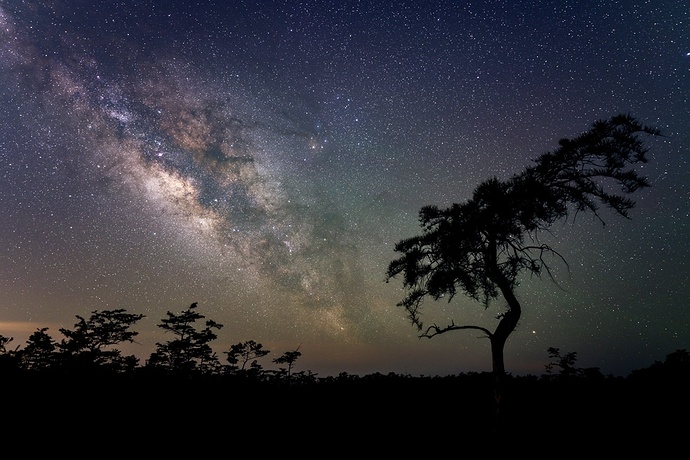Lol Amy Chua, what a piece of garbage
If you want proof Democrats never ever ever learn all you need to know is Breyer hasn’t retired yet!
I think that this is obvious to everybody. In the context of this discussion, “Indian food”, is used to describe the common dishes you can get at most Indian restaurants in USA#1.
Similarly if I were saying American food, depending on context, I’d likely be referring to what you get at an Applebee’s (not the quality, just the menu content). I obviously know that’s not all there is to American food. It’s just a short cut.
No argument here, but was there something specific that prompted this?
Does anyone here have any good recommendations for resources for teaching image editing? I’m getting into astrophotography, and the processing of those types of photos, to do it right, takes some understanding of image editing that is far beyond my basic understanding of processing software. There are some tutorials online that show basic workflow, but they mostly just tell you click this, press that and I’m the type of person that wants to know the why. I’ve found some more advanced workflow explanations for astrophotography that talk about all these things that processing does on an advanced level, but they expect the reader to understand all the stuff they are talking about already. So I think what I need is a good thorough course to explain image processing and what processors actually do, and how they render color and all that real technical stuff. Do any of you all know if anythjng like that exists?
I took a course in undergrad on basically what you want, but there was no textbook to recommend, unfortunately. I would search Amazon for digital signal processing. Image processing is just a subset of that. Did you happen to take any Fourier analysis in college?
I did not, but reading the wiki on it makes me wish I had.
Yeah you probably want to take a look. For example, converting from a bitmap or other uncompressed image format that is basically 3 arrays of numbers, one value for each of red, green, and blue for each pixel, to a jpeg, is basically a Fourier transform of those arrays, converting them into frequency space, and then chopping off the highest frequencies, which usually have the least impact on the image. I don’t know of any image manipulation algorithms that operate in frequency space, but there may be some, and you certainly will want to understand how image compression might impact how your photographs look at the end of the day. Jpeg can be pretty bad with sharp edges between black and white, like text, but potentially also the moon or stars or other celestial bodies.
Makes you wonder if a large enough rolling swarm could outrun Usain Bolt.
84 posts were split to a new topic: Music Theory for Prenatals and Beyond
https://mobile.twitter.com/FeelGoodPage11/status/1380346039912177666
https://mobile.twitter.com/eleanorkagan/status/1381040049488269320
https://mobile.twitter.com/FeelGoodPage11/status/1381081565011214337
https://mobile.twitter.com/FeelGoodPage11/status/1381245018317365255
https://mobile.twitter.com/FeelGoodPage11/status/1381062905236320256
Do you have examples of what you want to do?
So I have a bunch of starry landscape photos of the Milky Way, some I want to stack to enhance the Milky Way/ night sky. Then I want to take the result and blend it with a foreground exposure I took (same foreground, but with the main tree in focus and a much lower iso, so there’s mess noise). I have some intro-level software that stacks the sky photos, so that’s not a big issue. Where I struggle though is when it comes to editing the sky to bring out the detail and the natural colors and then merging the foreground and background photos in a way that looks natural. The merging is made more difficult because of how complex the trees are. Here’s my first attempt at editing, where I just gave up on trying to get the foreground right and just edited the composite and blacked out the foreground:
I think this looks cool, but really the colors are not all that accurate. There shouldn’t be greens in the Milky Way and there is too much blue/magenta. But things get way over my head real quick when I’m trying to remove light pollution and halos, so this is where I’m at, lol.
The upper left portion of the Milky Way, is actually pretty close to its “natural” colors, imo, but as you get closer to the horizon and the foreground objects it all turns to hell because of the light pollution and some haloing that results from stuff that’s way beyond my understanding (but I want to understand, so I can figure out how to avoid it)
This is how people end up in grad school and lives are ruined.
